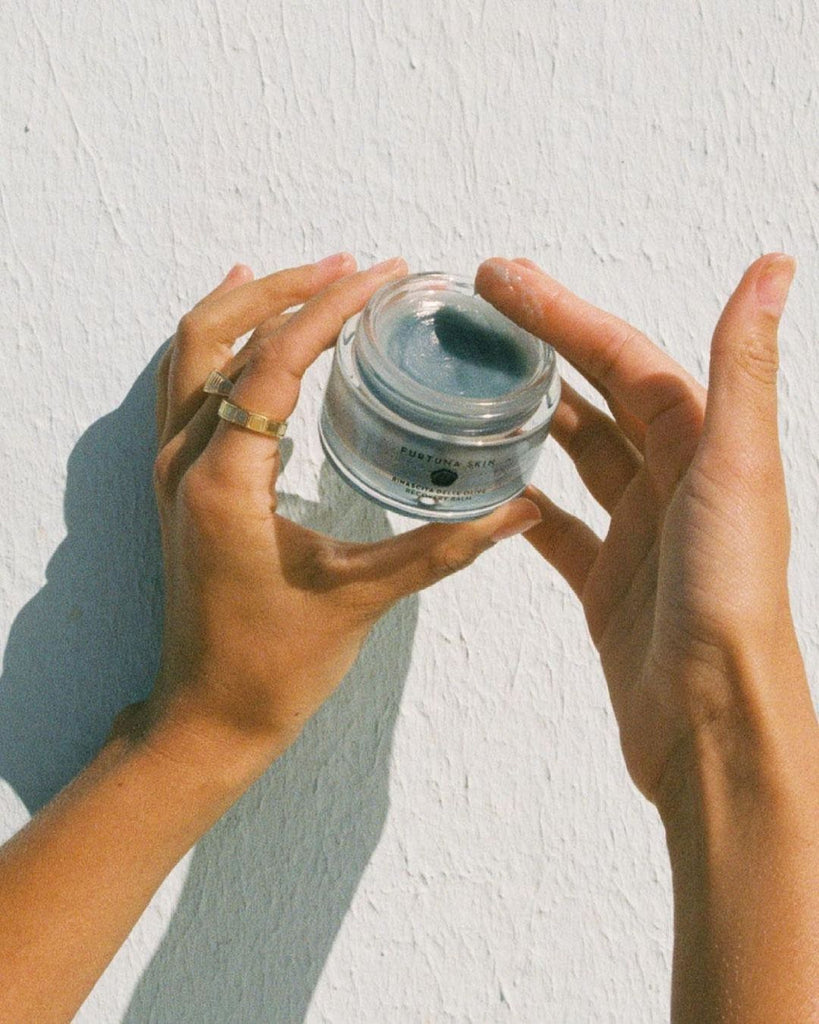Navigating the vast world of skincare can sometimes feel like decoding a complex puzzle, especially when unsure of your skin type. Enter combination skin, a term tossed around in beauty circles yet often misunderstood. Is it dry skin? Is it oily skin? What is combo skin type? It's both, and that's where the intricacy lies.
Combination skin presents a unique challenge, as it can exhibit varying characteristics of various skin types- normal skin and dry combination skin simultaneously, often leading to confusion in care and treatment. The duality of oily and dry skin necessitates a more nuanced approach to skincare. In this blog, we'll delve deep into understanding what combination skin truly is and arm you with actionable insights to manage and nurture it effectively.
What is Combination Skin?
Wondering what is combination skin? And what does combination skin look like? At its core, combination skin is precisely what it sounds like: a mix of oily skin and dry skin type. A normal combination skin is characterized by having more than one skin type simultaneously, usually a blend of both oily and dry or normal areas. The most common pattern seen in those with combination skin is the oily T-zone (forehead, nose, and chin), while the cheeks have flaky skin. This disparity can be due to various factors such as genetics, hormonal fluctuations, or even the environment.
But why does this matter? Well, different skin types have different needs. Oily areas may exhibit enlarged pores, a shiny complexion, or be more prone to acne breakouts. In contrast, dry patches can feel tight and flaky or might show early signs of aging or fine lines. Recognizing and understanding combination skin types is the first step towards a skincare routine that addresses the unique challenges of each area of your face and results in healthy skin. With combination skin, it's not about finding one-size-fits-all solutions but rather about tailoring your skincare to meet the diverse needs of your complexion.
How to Know If You Have Combination Skin? Is It Oily Skin or Dry Skin?
Determining whether you have combination skin can sometimes feel like a riddle. But, with a little attention to the signals your skin sends, you can easily decode its type. The telltale signs of combination skin often revolve around the inconsistency in skin behavior across different areas of your face.
- Do you often notice a shiny T-zone by midday due to excess oil production but feel dryness or even itchiness on your cheeks? This contrasting behavior is a hallmark sign.
- Another way to ascertain is by observing how your skin reacts post-cleansing. If, after washing your face, your forehead or nose feels perfectly balanced or even oily, while your cheeks feel parched or tight, you're likely in the combination skin category.
- Additionally, you might experience sporadic breakouts in the oily regions and slight flakiness in the drier zones.
- Pore size can also be a giveaway; enlarged pores in the T-zone combined with smaller pores on the cheeks further confirm combination skin.
To gain deeper insights, professional skin analysis by a dermatologist or a facialist in Beverly Hills can offer a comprehensive understanding, guiding you toward the best care regime tailored to your unique needs.
What Causes Combination Skin?
Genetics: This is one of the leading causes of combination skin. If your parents or close relatives have combination skin, there's a likelihood you'll inherit the same skin type.
Hormonal Fluctuations: Changes in hormone levels, especially during puberty, pregnancy, or menstrual cycles, can lead to varied oil production in different areas of the face.
Skincare Products: Using products not suited to your skin type can throw off its balance. Overly harsh products can strip the skin, causing certain areas to overproduce oil while others become dry.
Environmental Factors: Different climates or seasonal changes can affect skin behavior. For instance, summertime might increase oil production in the T-zone, while winter could exacerbate dryness on the cheeks.
Age: As we age, sebum production decreases, which might make some areas of the face drier while others retain their oiliness.
Diet and Hydration: Consuming excessive spicy or oily food, caffeine, or alcohol can lead to increased oiliness. Not drinking enough water can cause certain areas to become dry.
Stress: High-stress levels can lead to increased sebum production, exacerbating the imbalance between oily and dry areas.
Understanding the root causes of combination skin can aid in managing and treating it more effectively, leading to a harmonious, radiant complexion.
How to Care for Combination Skin Type?
Combination skin, with its unique mix of oily and dry areas, presents a challenge when it comes to skincare. However, with a tailored routine, quality Sente facial products , and maintaining a balanced and radiant complexion is entirely achievable. Here's a guide on how to care for your combination skin effectively:
Use a Gentle Facial Cleanser
The foundation of any effective skincare regimen starts with cleansing. For combination skin, this step is particularly crucial. Using a gentle facial cleanser ensures that the skin gets rid of daily impurities, makeup, and excess oil without stripping away its natural moisture.
Harsh cleansers can often exacerbate the issues associated with combination skin by making the dry areas even drier and triggering more oil production in the oily regions. Instead, opt for a high-quality, gentle cleanser that respects your skin's natural balance.
The goal is to cleanse without disrupting. Using lukewarm water, massage the cleanser in circular motions, focusing on areas that feel particularly oily or congested. Rinse thoroughly and pat dry, preparing your skin for the next steps in your regimen.
Add Exfoliation to Your Routine
Exfoliation is the unsung hero in skincare, especially for combination skin. It helps slough off dead skin cells, ensuring that pores aren't clogged, leading to breakouts or a dull complexion. With combination skin, regular exfoliation can bring uniformity, helping the skin appear more balanced and radiant. However, it's essential to find the right exfoliant. A gentle, chemical exfoliant containing ingredients like lactic acid or glycolic acid can be beneficial. They penetrate deep, addressing both the oily and dry areas effectively.
Physical exfoliants, or scrubs, can also be used, but ensure they aren't too abrasive. Over-exfoliation can lead to sensitivity, so aim for 2-3 times a week. By integrating routine exfoliation into your skincare regimen, you pave the way for fresher, more even-toned skin.
Use a Toner After Cleansing Your Face
Toners play a pivotal role in addressing combination skin concerns. They not only help restore the skin's pH balance after cleansing but also remove any lingering impurities, tighten pores, and prepare the skin to absorb subsequent products more effectively. For combination skin, it's recommended to opt for an alcohol-free toner that hydrates while balancing oil production. After cleansing, simply dampen a cotton pad with the toner and sweep it gently across your face, paying special attention to the T-zone. This step ensures a refined, balanced complexion, setting the stage for effective moisturization.
Moisturize Your Face
One of the misconceptions about combination skin is that it doesn't require moisturization, especially in oily areas. However, all skin, regardless of its type, needs hydration. The trick is to find a lightweight moisturizer that hydrates the dry areas without making the oily regions greasier. Gel-based or water-based moisturizers are typically ideal for combination skin as they deliver the required hydration without a heavy or greasy feel.
It's also beneficial to use products with peptides and powerful antioxidants, which lock in moisture, ensuring that the skin remains hydrated throughout the day. Apply the moisturizer in upward strokes, ensuring even coverage. Regular moisturization ensures that your skin remains supple, radiant, and balanced, addressing both the dry and oily concerns of combination skin.
Protect or Treat Your Skin
Combination skin has its unique challenges, which makes it crucial to protect and treat it appropriately. Daily exposure to environmental aggressors like pollutants can exacerbate the skin's imbalance, making oily areas more prone to breakouts and dry areas even drier. Incorporate antioxidant-rich serums or DMK skincare products in your skincare regimen.
These products combat free radicals and offer a protective shield against daily pollutants. Additionally, consider treatments with salicylic acid for the oily parts to prevent breakouts and nourishing oils or serums for the drier regions. Remember, combination skin needs targeted treatment for its diverse concerns.
Use a Sun-Block Instead of a Sunscreen
When it comes to protecting combination skin from the sun, sunblocks might be a more favorable choice. While both sunscreens and sunblocks shield the skin from harmful UV rays, sunblocks like those containing zinc oxide or titanium dioxide physically block the sun's rays. They sit on the skin's surface and reflect the sun, making them less likely to clog pores or cause reactions. This characteristic is particularly beneficial for combination skin, where certain areas are more sensitive or prone to breakouts.
Furthermore, sunblocks often have a mattifying effect, which can help control shine in the oily zones. When selecting a sunblock, opt for a broad-spectrum formula and reapply throughout the day for optimum protection.
Conclusion
Caring for combination skin might seem like navigating a complex maze, given its unique duality. However, with a deeper understanding of what it entails and by employing the right skincare regimen, managing it becomes much more straightforward. From selecting a gentle cleanser to opting for a protective sunblock, every step in your routine should cater to the diverse needs of your skin. Remember, the goal isn't just about striking a balance between the oily and dry zones but also ensuring overall skin health. By staying informed and making conscious skincare choices, you can embrace the beauty of combination skin and let it shine in its natural glory.



